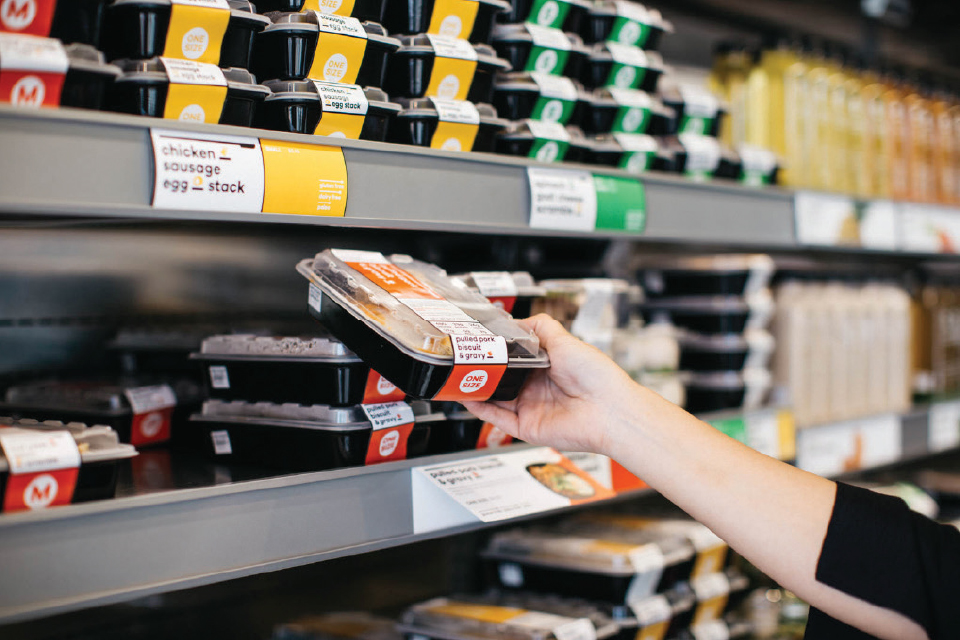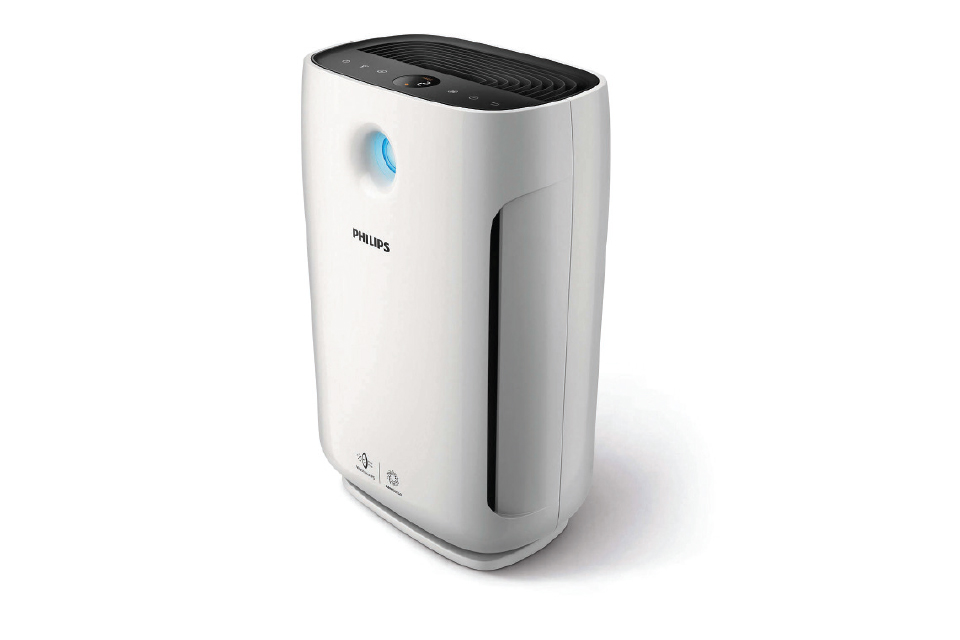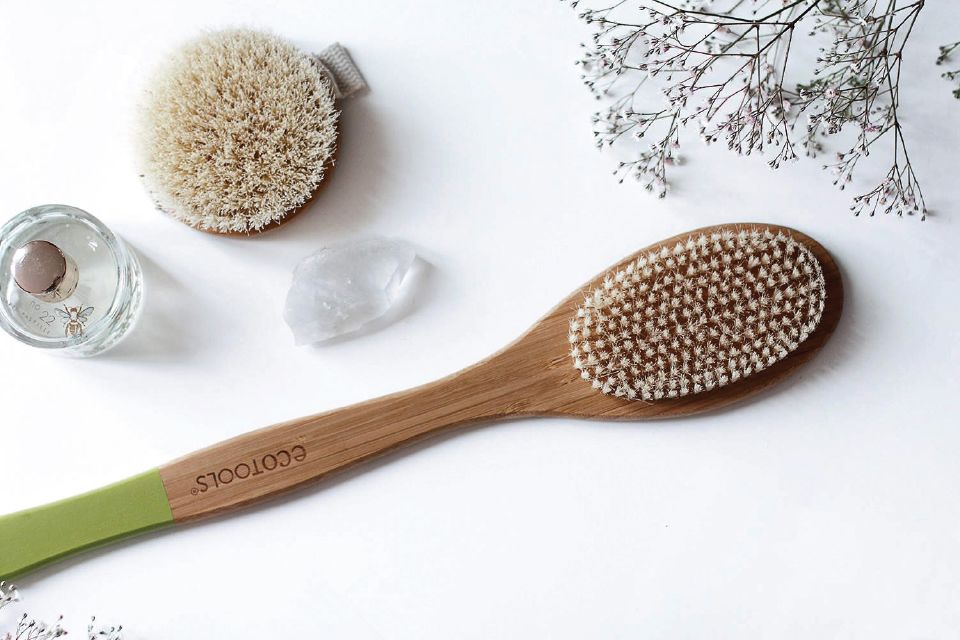Detox

Do you want to start the new year with the latest detox? Save some time by reading through this expert advice first! Find out if you are approaching your detox with the right mindset and why it’s important to go beyond the physical.
Detoxing From a Place of Self-Love
Kathryn Gates, a psychotherapist and fitness specialist who works with people to develop acceptance and intimacy within themselves and their relationships, said that the motivation behind doing a detox or cleanse is key. “The ‘why’ is going to drive whatever outcomes you have. If you are doing something because you hate yourself, the outcome is going to be different than if you want to make improvements from a place of loving yourself. A cleanse or marathon is not going to change that embarrassment of shame you feel of your body.”
She explained that being on a diet or doing a cleanse is simply serving as a distraction if we have not already done the “inner-work” — which is really the braver and more important challenge. Many of us might never get there, because we are always doing a diet challenge or trying to get that next raise.
“We often embark on cleanses or diets to achieve a sense of accomplishment," Gates said. "I could meditate every day this week, but it’s not as concrete. But it’s so worth it to change how your brain functions.”
I asked if she discouraged her clients with a history of an eating disorder from detoxing or cleansing.
“Yes, especially if your recovery is newer, it’s going to be with the wrong intentions," Gates said. "It’s going to be out of a desire for control.”

Claire Siegel, Snap Kitchen’s Lead Dietician and real food advocate had a complementary perspective. “We often enter these health journeys, diets and resets out of a sense of hatred for our own bodies – subconsciously restricting," Siegel said. "So much more effective and more enjoyable is coming from it out of a place of love. It’s about love and gratitude for your body — even if you are trying to lean down and get fit.
Thank your legs for carrying you and your stomach for digesting the food you eat. This allows you to enjoy the process. If you are in a negativity bubble, you are trying to get out.”
She explained that approaching a health goal (such as a detox or diet) from a place of negativity inevitably breeds failure. In fact, she does not use the word detox in her personal nutrition, health or wellness vocabulary.
“I feel like it implies that there’s a linear journey from a dirty and toxin-filled state to becoming 'pure' or detoxed,'" Siegel said.
"A healthy lifestyle has much more ebb and flow than that. It’s an ongoing journey — not something with a finite starting or stopping point. Not to mention that your detox organs like your liver, kidneys and skin are working to remove toxins all the time, whether you’re on a juice cleanse or not."
Detox the Home
If you have a history of an eating disorder or still have some aforementioned inner-work to do, it's recommended that you focus on ways you can remove toxins from your home and lifestyle rather than diving into a strict dietary detox. So, I compiled TreeHouse CEO Jason Ballard’s tips on how to create a healthy living space. Austin-based TreeHouse is the world’s first home upgrade company specializing in curated products and home project services that promote healthy and sustainable spaces with an emphasis on high performance and design.
Lifestyle tips
Our homes should ideally be places of comfort and happiness. Comfort is a difficult thing to pin down and can vary from person to person, but we know that it is affected by temperature, humidity, sound, light, smell and ergonomics/design. Strategies for increasing comfort include properly functioning heating, air conditioning and ventilation; exterior noise reduction; adjustable light; preventing irritating smells; and sound reverberation reduction.
Your first steps toward a healthier home
Air Filtration: Make sure you change your filters regularly, and consider adding a more advanced air filtration system if you know you have poor air quality, allergies, pets, mold or chemical sensitivities.
Water Filtration: It’s important to remove harmful elements and chemicals out of your drinking water. You can do something easy like a table top (and beautiful) Soma; a more advanced yet still sleek filter like those from Berkey (our favorite, photo below); or a whole home system like those from Aquasana or Kinetico.

Test: You can purchase kits (starting at $10) to test your home for mold, toxins, lead, bacteria, pesticides and more.
Choose Products Wisely: Make sure you know what is in that cleaner, laundry detergent, water bottle, insulation, candle, flooring finish and carpet. Non-toxic alternatives are now widely available.
Healthy Food Prep: Make sure your surface cleaners are non-toxic and that you are working on non-toxic, antimicrobial surfaces like stone or a cutting board.
Ditch the Teflon: Upgrade your cooking supplies to ceramic-based, non-stick or cast iron pans that are a safer alternative to traditional Teflon-based non-stick pans.
Tree-hugging: Bring some plants into your home. They improve air quality, and being around nature is good for the soul.
Sleep Smart: Get LED lights with softer colors (no blue or white) installed in your bedroom to improve sleep — and save energy!
Find our favorite air filter and non-toxic products on the next page.
Detox the Body, Mind and Soul
I spoke to Ayurvedic Practitioner, Jonathan Glass, about why cleansing is important and the techniques he finds most effective. I've included some excerpts from his upcoming book, “Total Life Cleanse.”
Why is cleansing important?
“Cleansing helps us maintain healthy immune systems and increase elimination — but it also helps us feel mentally clearer. It benefits the soul on a deep level because when we remove obstacles to our wellbeing, we can connect deeper to ourselves. The cause of all disease is when we ignore our own innate intelligence and experience. Cleansing clears the slate so that we connect to our own innate wisdom and creates a new platform to move forward with so that we are in touch with ourselves.”
He stressed that every organ is related to emotion. Therefore, when you make changes on a physical level, you will also see emotional effects. When people understand the power of their habits on a deeper level, they start to wake up to a life with more clarity and intention.
In “Total Life Cleanse” he goes into the two major reasons we cleanse:
The body naturally builds up toxins. Even within a relatively clean environment and with a healthy diet, we benefit from regular seasonal cleansing. Cleansing has always been the foundation of natural health systems, including ayurveda and Chinese medicine. These systems honor the body’s innate intelligence to heal itself.
Our modern condition contributes significant amounts of toxins and stressors to our daily existence. The need for regular cleansing is greater than ever. Cancer, heart disease and diabetes — the diseases of modernity — are off the chart and on the rise.
What does a cleansing diet look like?
Glass outlined the main components of the best healing diets:
No refined sugar: Healthy diets call for low to no refined sugar and high-fructose corn syrup, two of the most addictive and disease-causing substances on the planet.
No refined carbohydrates: Eliminate refined carbs in the form of grains that have been stripped of nutrients, leaving just the flour. Include whole grains and starches, such as rice, quinoa, buckwheat, millet and ancient forms of wheat. Most successful diets minimize or completely eliminate modern inorganic wheat and corn products.
No processed vegetable oils: Processed vegetable oils that have been highly refined and highly heated are often oxidized and stripped of nutritional value, and they were never part of the food chain until the past one hundred years. Most processed oils are high in omega-6 essential fatty acids and low in omega-3s, an imbalance that contributes to inflammatory conditions. Additionally, unless they are organic, corn, soy, canola and cottonseed oils are all genetically modified.
No dairy: Most healthy diets eliminate dairy products except for ghee and fresh, organic cultured products like kefir and yogurt. Dairy builds mucus in the body, is hard to digest and burdens the immune system.
Copious amounts of produce: Multicolored vegetables and fruits support immunity and good elimination, regulate body weight and feed the friendly bacteria in the gut.
Whole foods: Healthy diets focus on eating an abundance of whole foods instead of counting calories or obsessing about ideal macronutrient ratios. They don’t include processed or manufactured foods.
How do you go beyond diet when cleansing?
Glass described some simple home practices that you can incorporate for regular detox throughout the year, or ramp up while focusing on a dietary detox:
Sweating for Skin and Lymph Detoxification: The body releases hundreds of chemicals and toxins through the skin in our sweat. In this way, sweating benefits the lymphatic system, kidneys, lungs, skin, liver and blood. Sweating can be achieved through exercise, sauna or bathing.
Dry Brushing and External Oleation: Using a dry brush, which can be purchased at most health food stores, removes dead skin cells from the surface. After dry brushing, lightly massaging the entire body from head to toe with sesame or coconut oil is extremely nourishing for the tissues, assists the body with drawing out fat-soluble toxins and rejuvenates and moisturizes the skin.
Tongue Scraping: Another handy device that can be found in most pharmacies and health food stores, a tongue scraper removes the toxic coating that builds up on your tongue, especially when used first thing in the morning.
Nasal Rinsing: Using a neti pot first thing in the morning, every day, will eliminate particulates, toxins, bacteria and common allergens from your sinuses and enhance circulation of air, blood and energy in your body.
Regular media cleansing: “We are not able to digest an unlimited amount of food; neither are we able to process an unlimited amount of energy and information. While it is obviously beneficial to avoid ingesting unhealthy foods, it’s also extremely beneficial to avoid unhealthy sensory, informational and emotional input, and to limit the amount of input we are exposed to," Glass said.
Media is generally a source of excessive input. It is not only stimulating but also stressful and mind-numbing or depressing.
Why Should I Detox?
Detox – Why You Need To
I’ve spent the past decade in the trenches of pubmed.gov exploring the data that tells a grim story about how we are killing this planet and ourselves…death by 1000 papercuts. There is data to support changes to your daily routine — ditching receipts, or choosing a new hair dye — but then there is data that makes us feel powerless and destined for decimation by The Man.
Here’s the kicker, though: the dangers of toxicant exposures are highly personal.
Like everything else in the reframing of our human experience, we are de-standardizing health. We are bringing medicine back into the realm of the “N of 1” or the “study of You.” You are not a randomized clinical trial. You are a specific symphony of information.
This is why the old model of studying toxicity — the dose makes the poison — is antiquated. In the newest literature, there is the potential for a synergistic process to emerge from concomitant exposures. I want to tell you about one of the more important recent papers that speaks to this issue.
I’m going to lay it on you and then we will figure out what can be done to detox your body and your life.

Toxic Co-Exposures
So, Houston…we have a problem. Just look at our children. In 2008, our infant mortality rate in the first year of life left us ranking 46th in the world. By 2015, we had plummeted to 59th, and the unenviable position of having the highest rate in the world on the first day of life.
Given that we spend vastly more money and have more doctors than our seeming competitors Guam and Cuba, it’s time to take a good look at the exposures driving this seeming epidemic of mortality. Then we must examine the chronic diseases that 1 in 6 of our children are now labeled with.
In the paper Environmental Toxicants and Infant Mortality in the USA, Kennedy (et al) proposes that we ask some big questions about the roles aluminum, mercury, silicofluoride, lead, fertilizers and glyphosate play in infant mortality. That’s a long list of suspects; because there isn’t just ONE smoking gun.
In this open-access paper, the authors explore the history of how these agents have been supported by public policy and how they now interact, potentially synergistically, to keep us sick, and in some cases, to accelerate our deaths.
They write:
“A baby born in the U.S. with excess mercury derived from its mother’s mercury/silver amalgam tooth fillings is subject to further exposure to both mercury and aluminum from an aggressive vaccine schedule that requires more vaccinations than any other country in the world, including a
Hep-B vaccine administered at birth that contains both mercury and aluminum. If the mother is unable to nurse the baby, and if economic considerations influence her to choose a powdered formula reconstituted with tap water, then it is likely that the infant will also be chronically exposed to fluoridated water during the first year of its life.”
While we are swimming in a chemical soup at any given moment, they focus their discussion to three major players:

Aluminum – Beyond Foil!
Foreign to the human system, embedded deep in the earth’s crust, aluminum is now a routine exposure through deodorants, baking powder, antacid drugs, inhaled particles, and injected vaccines. A known neurotoxin and potent immune stimulant (why it is used as an adjuvant in vaccines), aluminum appears to be a vector of autoimmunity and chronic neuroinflammation, particularly when exposure occurs during the sensitive window of neonatal development. Implicated in autism, Alzheimer’s, ADHD and Parkinson’s, neurological degeneration is on the rise, in part due to our escalating exposure.
Fluoride – Great for Teeth?
Sixty five years ago, fluoride was introduced into municipal water supplies under the auspices of its potential to prevent dental decay. In fact, fluoride was waste from the notorious Manhattan Project, in which hydrofluorosilicic acid was used to separate uranium from phosphate rock in efforts toward the creation of the American atomic bomb. Despite its being framed (sodium fluoride, not the less studied, more toxic hydrofluorosilicic acid) by the CDC as one of the most important public health interventions of modern times, an examination of the literature on fluoride’s health effects supports quite another story. With tooth decay rates similar in fluoridated and unfluoridated regions, the epidemiologic signal of harm includes kidney failure, dental fluorosis, and in 36 studies, demonstrated lower IQs in children when exposed systemically.

Glyphosate – Roundup’s Toxic Vector
With evidence of carcinogenicity, intestinal flora disruption, liver and kidney toxicity and chelation of vital nutrients, glyphosate exposure is the result of a food supply commandeered by the makers of pesticides which once included Agent Orange. In formula and even breastmilk, glyphosate (and the other synergistic ingredients in Roundup) are an early exposure to today’s babies. These toxicants have the capacity to interfere with all aspects of human health in increasingly documented and studied ways.
The authors discuss the “Petkau Effect” in which ‘harm from chronic low levels of exposure to one or more injurious factors turns out to be greater than from a single, much larger exposure’. For example, the combination of aluminum and fluoride exposure results in the compound aluminum fluoride which can penetrate the blood-brain barrier potentially delivering the complex to the delicate tissues of the brain. The authors state:
“As studies of “Autoimmune-inflammatory syndromes induced by adjuvants” (also called “ASIA”) have documented, the widespread use of aluminum “adjuvants” to augment the response of the human immune system during vaccination, combined with public water treated with silicofluorides being delivered to over 120 million Americans, can only make toxicants like silico fluoride and aluminum more injurious than they might be in isolation.”
One of the authors, Senneff has previously published on the potential for glyphosate to similarly ferry aluminum into the brain. This trifecta is unfortunately eluding exposure because of the intricate web of potential and highly personalized interactions.
The authors conclude that “in countries where vaccination, fluoridation, and herbicides applied to the food and water supply are being aggressively increased by policy-makers, it should not be surprising that disorders, diseases, and fatalities in early infancy are correspondingly rising.”
What to Do?
1. Buy Organic
While there is concern about decimation of the complex web of life that is our soil, and the informational properties of plants and animal foods, eliminating pesticide exposure from your diet is a powerful step as evidenced by assessment studies. Prioritize organic purchases for the dirty dozen according to EWG. Remember that washing produce does not remove glyphosate.
2. Filter Your Water
A major source of fluoride ingestion, invest in the first countertop reverse osmosis for your 8 glasses a day! This will also help you avoid metals, hundreds of disinfectant byproducts and even low-dose exposures to prescription drugs!
3. Think Long and Hard About Vaccination
With some of the prime aluminum culprits being Hep B and Gardasil, learn the ingredient list of any and all pharmaceutical products you are considering. As we discover more about the near infinite sophistication of your interconnected bodily systems, and the hyper-individuality of any cause and effect process resulting from a healthcare decision, the one-size-fits-all, indemnified vaccine program may begin to make less and less sense to you. Educate yourself before you make a choice that could change everything for you and your family. Trust your body. Invest in your immunity. And explore a mindset shift that offers you a fear-free way to understand health and wellness.
4. De-Stress
Ever wonder why two people can be exposed to the same toxic exposures, and only one of them will develop depression or cancer? The health of the stress response has a lot to do with it, according to recent literature. I recommend meditation, especially specific Kundalini medical meditations, for reversing stress damage.
Remember, it takes one person, motivated by love, to reconnect many to their own native wisdom. From this place of connection, the natural world has infinite regenerative capacity.
I hope that this expert advice helps you approach any detox endeavors this year from a healthy and balanced perspective. Also, if you decide to start the year with a reset or cleanse protocol, remember to go beyond the physical. Take the time to incorporate practices that will also cleanse your mind and spirit. Because you’re worth it. And remember, don’t freak out if you don’t complete the perfect detox —because stress can be the most toxic of all!


.jpg)









